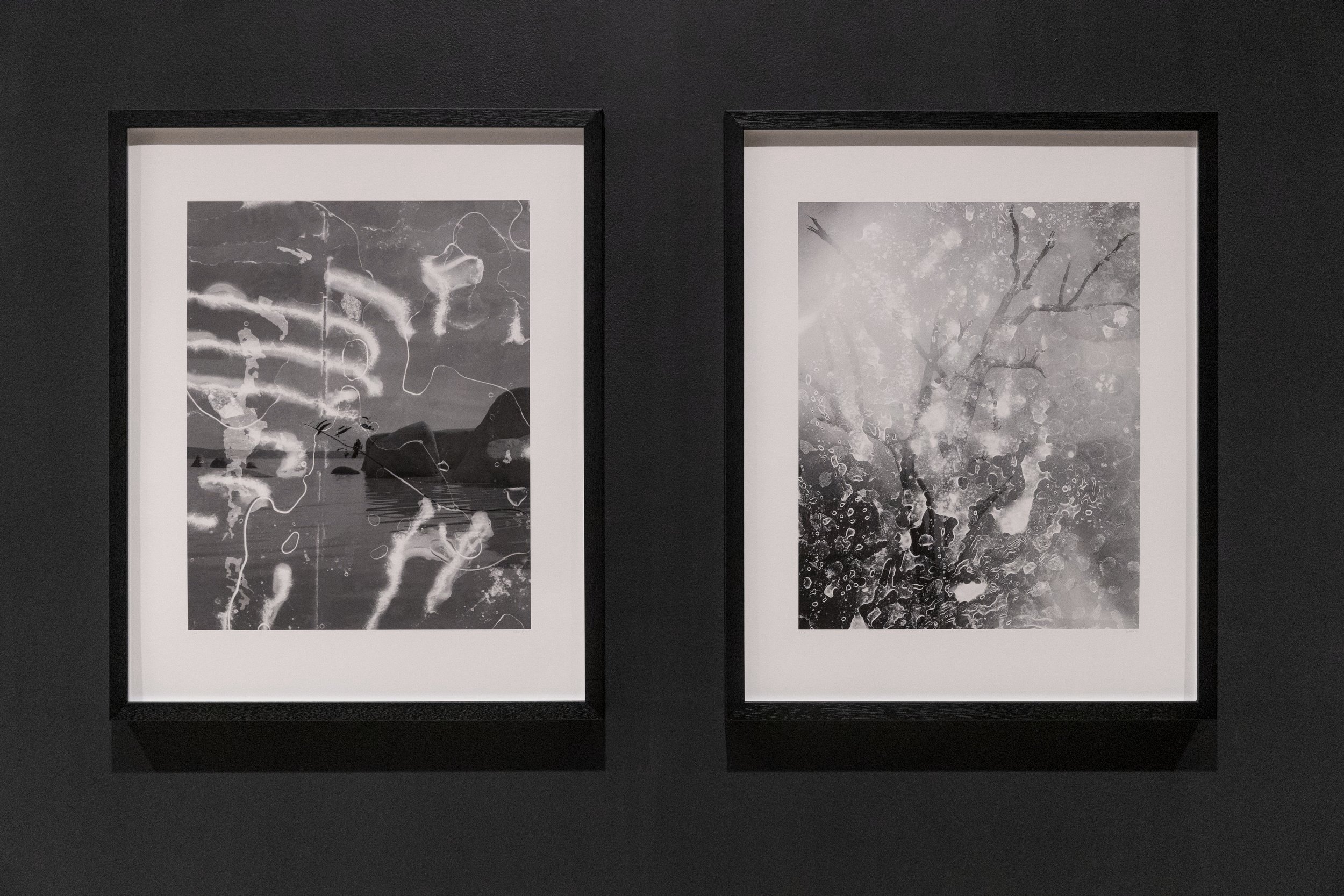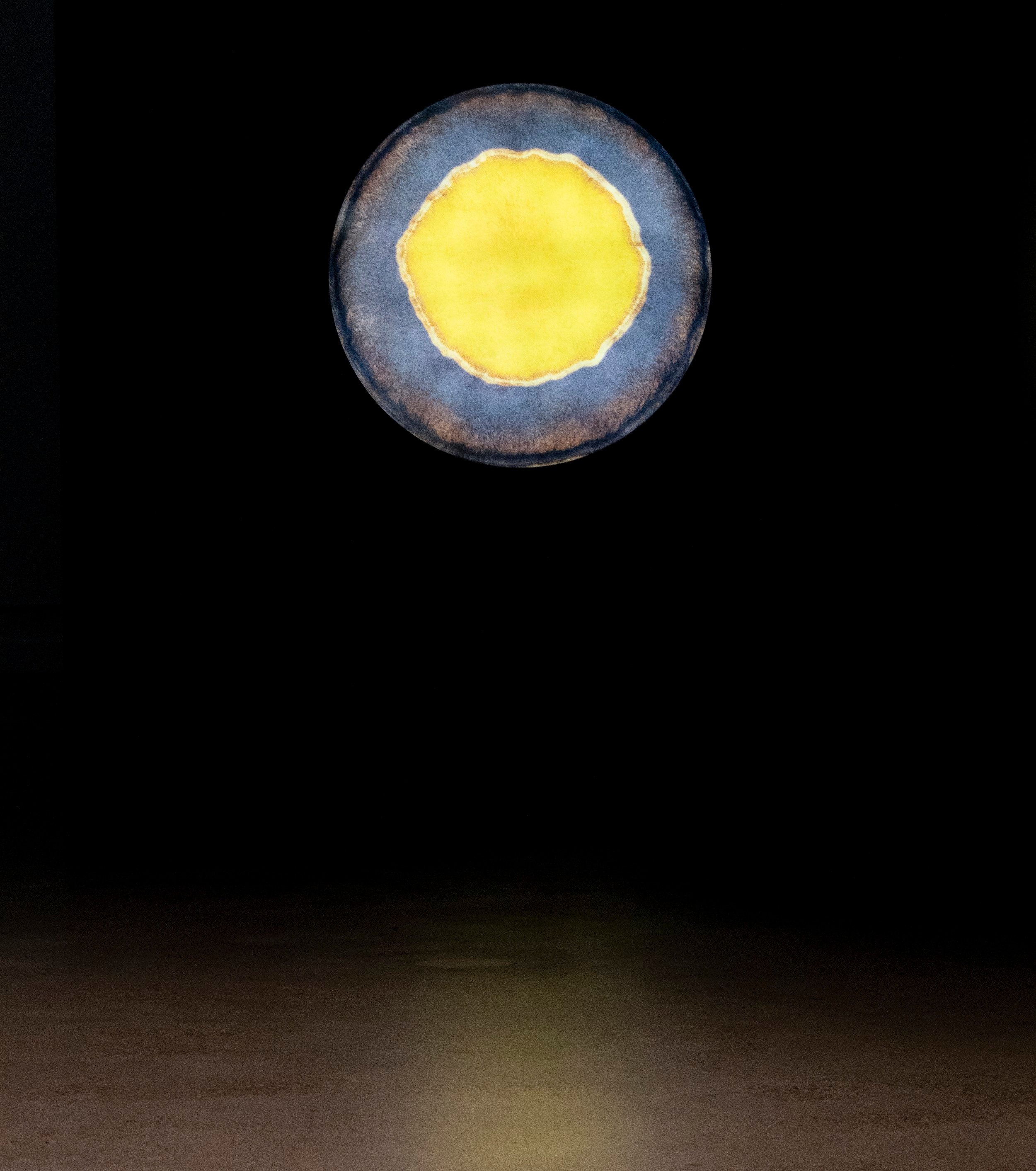Conversations with bees
Goulburn Regional Art Gallery | 22 nov. 2024 — 1 feb. 2025
This exhibition was nominated in the exhibitions category of the 2025 IMAGinE Awards - presented annually by Museums & Galleries of NSW (MGNSW).
Honeycomb #3, 2023
This work was acquired by Goulburn Regional Art Gallery for their permanent collection.]
Kamberri/Canberra-based artist Sammy Hawker explores the potential of reciprocal engagements between human and more-than-human worlds. Hawker’s multi-disciplinary practice consistently embraces text, photography and moving image. These works form part of a vast and ongoing archive documenting sites and moments of exchange.
Over the past few years Hawker has been co-creating imagery with two hives of honeybees cared for by local beekeeper Oli Chiswell on Ngunawal/Gundungurra Country. These beehives live to the north of Ngungara/Weereewa/Lake George, an endorheic lake which periodically fills and then empties of water.
Conversations with bees evolved from research around the European ritual ‘telling the bees’, where honeybees are told of recent deaths in a beekeeper’s household. It is believed if the bees are not informed they might leave the hive and follow the deceased into the afterlife. It is understood the practice has its origins in Celtic mythology where bees are regarded as messengers between the natural world and the spirit realm; a portal connecting the living and the dead.
The photographs Hawker delivers to the hives are of ecologically disturbed sites from around Ngungara/Weereewa/Lake George, ‘informing’ the bees of the mass disappearance of more-than human lives in the roar of the Anthropocene.
Conversing with bees is a practice of recognising and grieving the losses of a changed and changing world. Like the ever-shifting shoreline of Ngungara/Weereewa/Lake George, the exhibition Conversations with bees is a reflection on liminal or in-between spaces, and a consideration of how European mythology has become entangled within the Australian landscape, sitting ajar to Indigenous Australians own deep stories and knowledge of Country.
Supported by CAPO (Capital Arts Patron Organisation).
Exhibition Install:
Conversation with bees | Goulburn Regional Art Gallery
Image credit: Silversalt Photography
Conversation with bees | Goulburn Regional Art Gallery
Image credit: Silversalt Photograph
Chromatogram of a dead bee, 2024, fujitran print framed in custom-built lightbox
This is a chromatogram made from the body of a dead bee (found midwinter outside a hive cared for by Billy).
Chromatography is a photographic process commonly used by scientists to understand the chemical makeup of soil. I've been testing the process’s capacity to facilitate the visual expression of a wide range of vibrant matter. The hues and patterns that form as the solution spreads over the silver nitrate soaked paper cannot be controlled. The outcome raises questions of how memory is inscribed within materials.
I find myself in a state of quiet awe when working with chromatography - but I was in particular awe when the bee produced this chromatogram - so reminiscent in colour and shape of a honeycomb cell.
Chromatogram of a dead bee, 2024, fujitran print framed in custom-built lightbox
Conversations with bees, 2024
8 minutes, 43 seconds
Single-channel High Definition video
16:9, colour, sound
Chromatogram of Scotch Thistle (diptych), 2024
Chromatogram of Scotch Thistle (diptych), 2024
Chromatogram of Blackberry Thorn (diptych), 2024
Chromatogram of Four Leaf Clover (diptych), 2024
Process Imagery:
6x6 negatives for the hives | photo credit: Rich Mockler
4x5 negative hanging in the studio
Excerpt from ABC ‘Art Works’ [Series 3, Episode 3, 2023] | produced by Richard Mockler
Oli smoking the hives
Oli checking the frames
Listening to the hives through a contact mic | photo credit: Oli Chiswell
Cutting the negatives out of the frame | photo credit: Emily Ings
Oli putting the negatives into the hives
Documenting the process with the Mamiya C330 | photo credit: Rich Mockler
Listening to the hives through a contact mic | photo credit: Oli Chiswell
Antslayer - my local magpie friend overseeing the process
Photographic negatives hanging in the studio
















